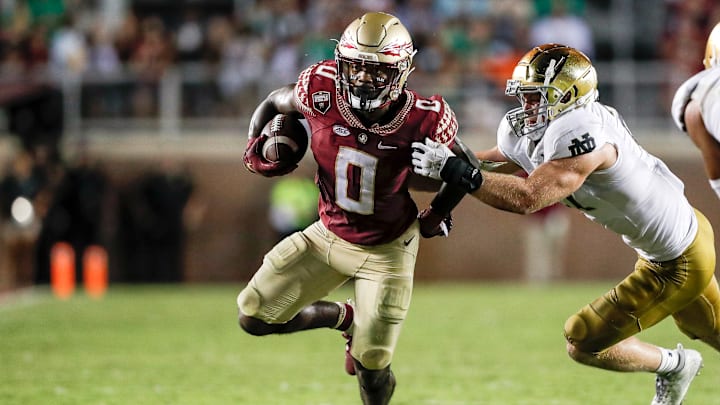Adolescent BCS Era (2004-2008)
The 2004 season marked a turning point for the Bowl Championship Series, as Utah earned a top-six ranking and became the first team from a non-affiliated conference to break the threshold for earning an automatic bid. Their subsequent victory over Pittsburgh led to a congressional inquiry into the closed nature of the system and inspired updates to the rules for qualification.
By 2008, when Utah returned to the BCS for a second time as Mountain West champion, a sea change was beginning to form in college football. Both the MWC and the WAC were increasingly looked upon favorably by pollsters and computers alike, and BCS Busters were becoming an annual occurrence.
The greatest reflection of this increased respect is the fact that both the 2004 and the 2008 Utes squads would have actually earned a top-four seed and a bye in a hypothetical 12-team playoff bracket in their respective seasons. So with Cinderellas beginning to transform into giants in their own right, which first-round matchups would have set the internet aflame in this era?
2004
#8 Virginia Tech Hokies (10-2 ACC champion)
vs.
#9 Boise State Broncos (11-0 WAC champion)
Imagine if Boise State had broken into the public consciousness two years earlier than they ultimately would in real life. Had a 12-team playoff existed in 2004, the Broncos would have earned that chance to become the next mid-major breakout stars with a trip to Lane Stadium. A showdown between Boise State and Virginia Tech would pit the only two conference champions in the opening-round bracket against one another, which would only heighten the hype around what was then a relatively unknown underdog.
2005
#6 Oregon Ducks (10-1 Pac-10 runner-up)
vs.
#11 West Virginia Mountaineers (10-1 Big East champion)
Thanks to Nike founder Phil Knight's hefty donations and a streak of strong head coaches in Eugene, Oregon emerged as a national powerhouse in the 21st century. In 2005, the Ducks finished behind USC as the runner-up in the Pac-10 but would have hosted a home game at Autzen Stadium in a theoretical 12-team playoff bracket. Their visitors would have been Big East champion West Virginia, themselves a 10-win team but disrespected by pollsters thanks to a defeat on the first day of October to ACC runner-up Virginia Tech.
2006
#8 Boise State (12-0 WAC champion)
vs.
#9 Auburn Tigers (10-2 SEC West runner-up)
We all know the hype that surrounded Boise State after they topple Oklahoma in the Fiesta Bowl. Imagine how much more hype the Broncos would have received in 2006 if they would have earned the distinction of becoming the first mid-major team to host an opening-round playoff game on the Smurf Turf in Idaho? They would have taken on Auburn, the runner-up in the SEC West that season, with the winner advancing to a date with undefeated Ohio State.
2007
#8 Kansas Jayhawks (11-1 Big 12 North runner-up)
vs.
#9 West Virginia Mountaineers (10-2 Big East co-champion)
The 2007 season was one of the most chaotic in college football history. Teams continued to rise and fall from the top two spots in the BCS rankings as one upset after another befell the sport. At one point West Virginia was in line for a title spot; so too was Kansas. Both fell in November to tumble out of the running for a national title bid that season... but what if the Jayhawks hosted the Mountaineers in Lawrence in a second-chance showdown to advance to the quarterfinals?
2008
#5 Texas Longhorn (11-1 Big 12 South co-champion)
vs.
#12 Cincinnati Bearcats (11-2 Big East champion)
Texas fans still seethe over what was viewed as a clear injustice in 2008. Despite defeating Oklahoma head-to-head in Dallas, the Sooners finished ahead of the Longhorns and Texas Tech in a three-way tiebreaker based on the BCS standings. Had a playoff existed that year, Texas would have been a clear fifth seed as the best non-conference champion. Their opponent would have been a Cincinnati team coming off itis first Big East championship after realigning from Conference USA, setting up a clear David-versus-Goliath narrative.
